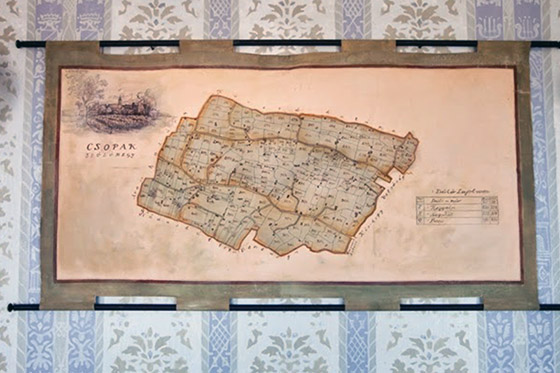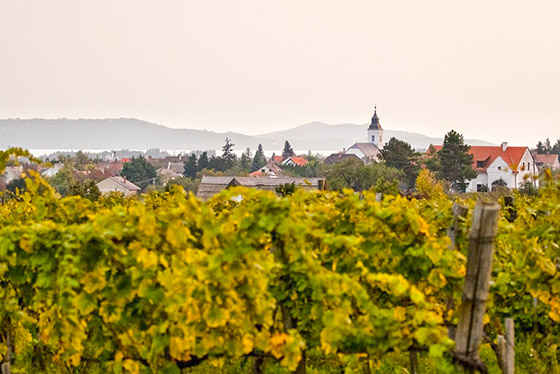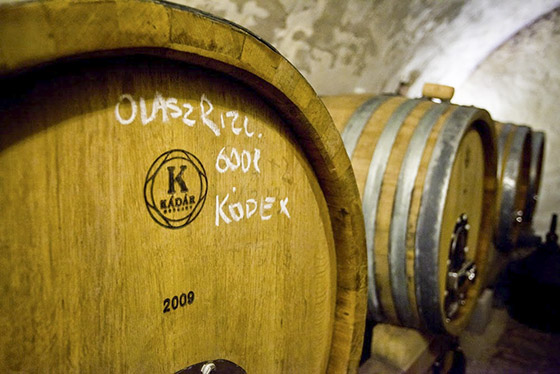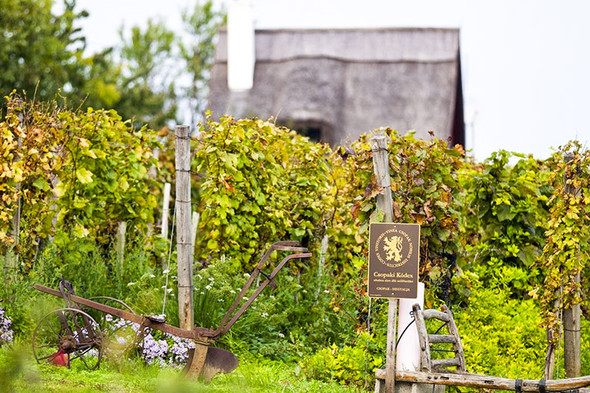As we have already mentioned the idea of the Vinea Balaton triple categorisation, our next wine will be a vineyard-selected wine from Csopak. However, beforehand, let me tell you something about the Csopak Codex, arguably the most exciting thing that has happened in the last few years to Balaton wine and Olaszrizling.

The name of Csopak means three things from a wine history point of view:
- Firstly, it is the name of an independent wine-producing district situated on the eastern part of the northern shore of the Balaton in the Balatonfüred-Csopak wine region, which includes the vineyards of five communities.
- Secondly, it is one of the five wine-producing communities, along with Paloznak, Lovas, Alsóörs and Felsőörs.
- Thirdly, Csopak is also the name of a defined type of wine which can only be made from Olaszrizling grapes grown in the vineyards of the five communities.
In Csopak, in recent years, unparalleled local cooperation has aided the revival of a wine culture built on a good hundred years of tradition:
- On the initiative of the local wine community, they have succeeded in ensuring that only Olaszrizling wines following with Balatonfüred-Csopak regulations may be commercialised with the designation of origin Csopak. Csopak is the only place in Hungary where a varietal wine may exclusively bear the name of the production area.
- On the initiative of the Csopak local council, the Csopak vineyards have been classified as a protected natural area of local significance.
- On the initiative of producers, an independent two-tier quality classification system has been introduced in addition to the wine region’s regulations.
- The Csopak Codex trademark protection system was established as a result of the joint work of the producers and the Csopak local council. Wines made according to its specifications must comply with the strictest quality and origin protection regulations in the country.

According to this, grapes may only be Olaszrizling and must originate from the 30 first class vineyards belonging to the five communities of the Csopak district. The vines must be at least ten years old and have a planting density of at least 3,0000 vines per hectare. In the case of new plantings, there must be at least 4,000 vines per hectare and the ratio of missing vines may not exceed 10%. In the vineyards, producers may only use green plant protection products, no fertilisers, insecticides or herbicides are permitted. Wine bearing the Codex trademark may only be produced from the fruit of one vineyard. It is forbidden to add any additives, acids, flavours, sugar or concentrate to the wine or must. The maximum yield is 1.5kg of grapes per vine, the maximum extraction is 40hl/ha, the actual alcohol is 12-13%, residual sugar maximum 4g/l and recommended acidity content minimum 5.5g/l. The wine may only be made from healthy grapes; botrytis is undesirable. The must may only be fermented spontaneously or with neutral yeast. The minimum maturation time of the wine is nine months, of which six months in tank and/or oak and a further three months’ bottle ageing. Codex wines must be filled in uniform Burgundy bottles.
All land falling under the Codex protection or a wine applying for the Codex trademark shall be subject to five inspections per year:
- Pruning inspection: pruning and trellis system, check of missing vines
- Veraison inspection: under-vine soil tillage, canopy management, check of number of bunches
- Harvest inspection: yield quantity and quality, check of sugar degree of the must
- Inspection of work in winery: cellar hygiene, tasting of new wine
- Csopak judging
The first four points are internal inspection, which are the task of a local committee. The fifth is a sensory qualification, independent of the producers, carried out by a five-member committee. Earliest date of commercialisation is October of the year following the harvest.
Let’s say a few words about the geographical characteristics of the Csopak area too. The Balatonfüred-Csopak wine region comprises 2,200 hectares on the northern shore of Lake Balaton, towards its eastern extreme. In the area around Csopak, where Olaszrizling feels just as at home as Grüner Veltliner in Wachau or Pinot Noir in Burgundy, we can observe triple geological fragmentation in the vineyards as we move further from the lake and higher up the slopes of the hill. The soil of the vineyards near the lakeshore is made up of red sandstone and red clay (at 120-160m altitude). In the middle level, the marl suddenly colours the previously red soil white (160-200m). At the highest level, the slopes become steeper and the soil turns increasingly chalky, concealing limestone and dolomite rock beneath it (200-300m altitude).

The producers who created the Csopak Codex rightly recognised that the land is able to show its ability for uniformity together with cultivation method and wine-making technology if you try all this with just one grape variety, so we are happy to say that currently Csopak Olaszrizling is the most promising initiative for protection of origin in Hungary.
To conclude our 2 weeks Olaszrizling series, I’d like to recall an important moment. In 2011, a Hungarian blogger interviewed Matt Kramer, who is perhaps known as a Wine Spectator columnist. He had been to Hungary shortly before and based on his tasting experiences, he said:
I still can’t understand why, apart from the economic logic of low prices and high yields, why anyone would be interested in a variety such as Olaszrizling. I understand, of course, the historical reasons for it being so widespread. But it’s a loser variety.
The Csopak Codex charter was signed on 1 January 2012. Tasting the wines, there could be no better answer!
Photos by Tamás Babják






